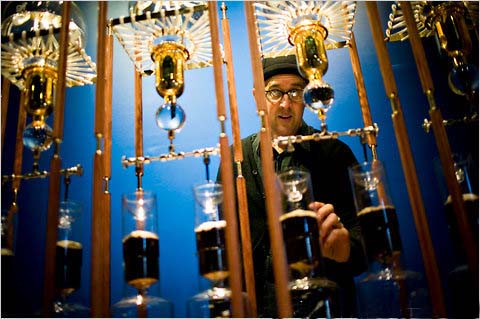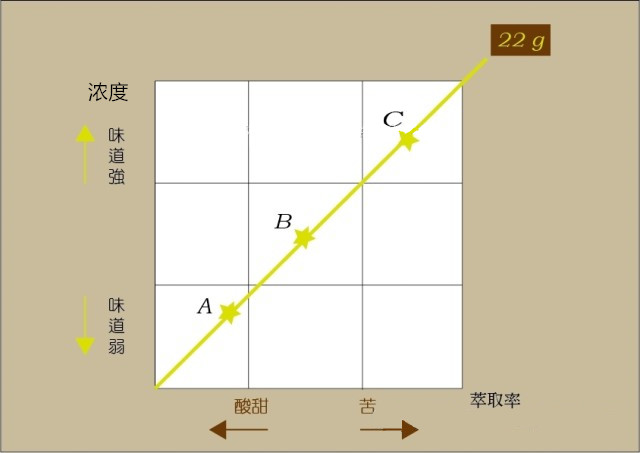Calculation method of SCAA Gold Cup extraction theoretical Coffee extraction rate calculation of correct extraction

You can refer to the above chart, which is a standard gold cup theory chart (also known as extraction control chart; Brewing Control Chart,SCAA). Do you feel dazzled? It doesn't matter. Let's talk about what this picture is going to say in a simpler way.

Then let's take a look at the picture above. Let's delete some unnecessary information first. In fact, the conclusion expressed by the golden cup theory is very simple. The vertical axis of the chart is the concentration of coffee, and the horizontal axis is the extraction rate of coffee. When you brew coffee with a concentration of 1.2-1.4 TDS and an extraction rate of 18%-22%, it is considered to be within the ideal extraction range.
Let's explain the nouns mentioned above. Concentration is easy to understand, which is the concentration of "solids" in coffee. What about the extraction rate? The extraction rate refers to the coffee powder you use to brew, and what percentage of the substance is dissolved in the coffee. For example, when you use 100g coffee powder for brewing, after brewing the coffee, remove the moisture from the coffee grounds (whether dried or dried), if there is 80g left, it means that 20g of the substance is dissolved in the coffee. Then the extraction rate of this cup of coffee is 20%.
Then the big question is, for the average brewer, would you want to take a lot of trouble to measure these data after making a cup of coffee? At least I would never do that. Of course, there are also companies that have launched instruments and software for measuring TDS and calculating extraction rates, which allow you to measure quickly, but that is not an investment that ordinary brewers need.
It is because the measurement of these data is too difficult for the average brewer, so the data provided by the Golden Cup theory is "completely unimportant" to the average person. On the contrary, what matters is something that can't be easily known just by looking at the chart.
Source: Beresta's blog
Important Notice :
前街咖啡 FrontStreet Coffee has moved to new addredd:
FrontStreet Coffee Address: 315,Donghua East Road,GuangZhou
Tel:020 38364473
- Prev

The History of making and using Ice drop Coffee introduction of single boutique Coffee
The most popular way to make coffee this summer is ice drop coffee, which has a history of a century but has been forgotten by people. This kind of coffee is easy to make and you can try it at home. But why does this unpopular way of making coffee attract the attention of coffee lovers and baristas? the trend in the coffee industry in 2014, first of all, Flat White coffee is very popular.
- Next

Coffee extracted by SCAA Gold Cup identifies the distribution of sour, sweet, bitter and salty on the tip of the tongue
Since the data is not important, what is important? The effect of extraction rate on taste, of course. When you have a thorough understanding of the relationship between the extraction rate and the taste trend, it will definitely be of great help to your cooking adjustment. Let's take a look at this diagram. The data of vertical axis and horizontal axis are removed and replaced by the relationship between concentration taste and extraction rate taste. When coffee
Related
- What is the meaning of lactic acid fermentation with coffee bean treatment?
- How to judge the state of foam by sound?
- How does the latte pull out the unicorn pattern? Come to get for a little trick to improve the flower pull!
- Will flower pulling affect the taste of the latte?
- Do you know the history of coffee?
- The difference between honey treatment and sun washing what is raisin honey treatment?
- What kind of milk can a novice use to make coffee foam to keep the foam longer? The correct method and skills of milking tutorial sharing
- Why do washed coffee beans taste sour? Flavor characteristics of washed Coffee
- Introduction to the skill of how to practice the size and height of water injection around the circle of hand-brewed coffee
- How do beginners practice coffee flower drawing from scratch?

